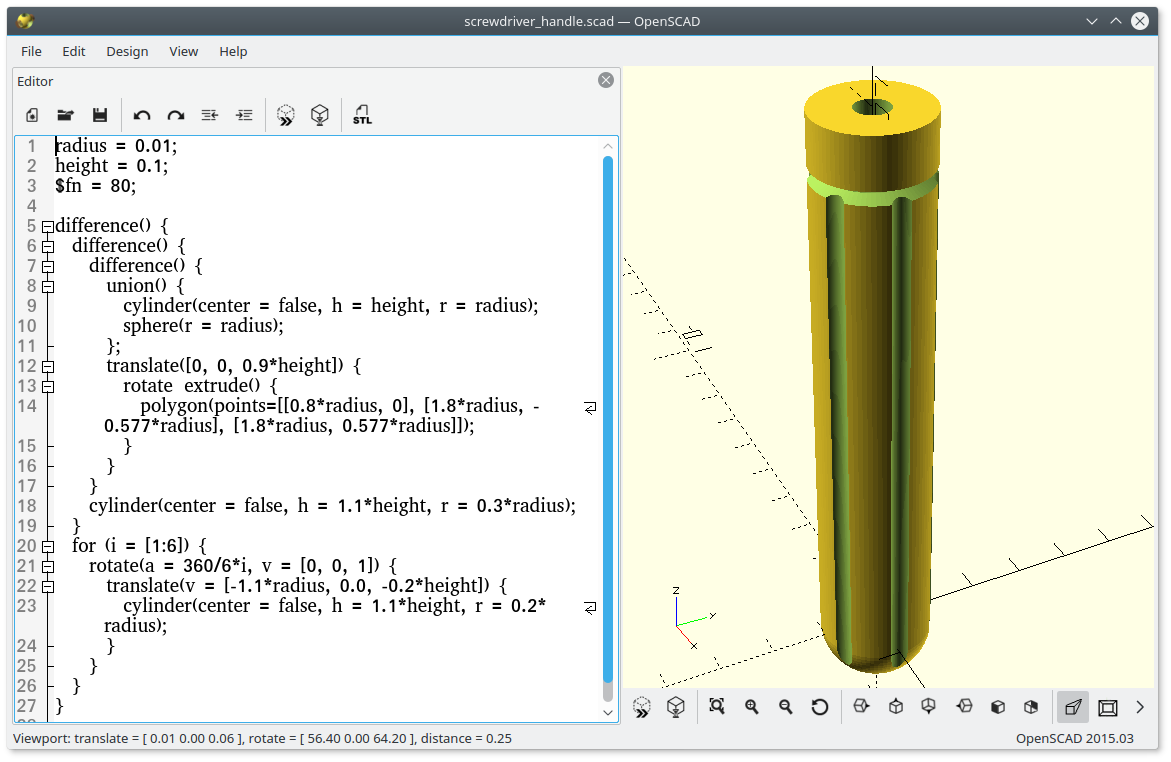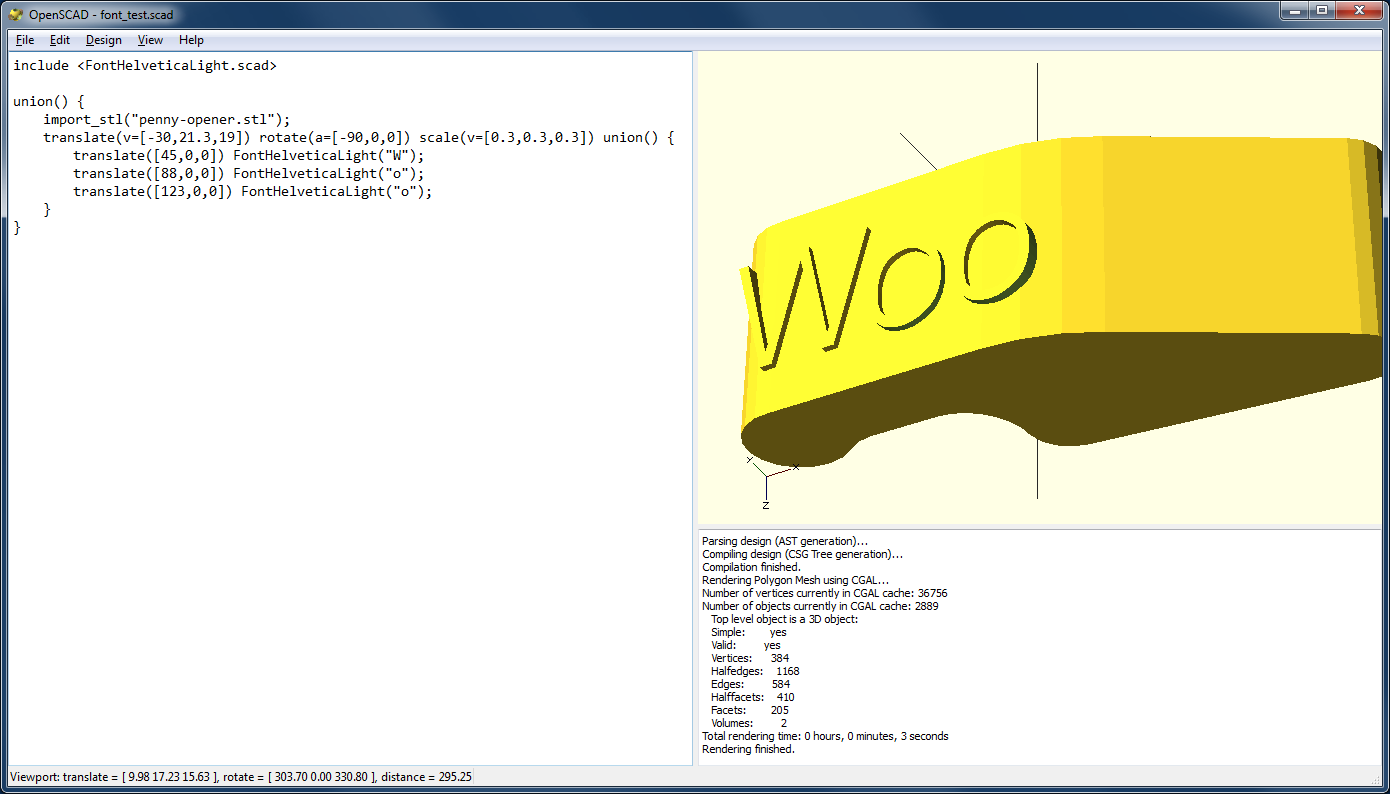

The base will be 1cm thick and 2cm large. My laptop is 2cm thick I’ll make the base 5cm long, leaving some room for the columns. You can build any parallelepiped with the cube function kind of non-intuitive if you ask me, but I guess it’s simpler that way. Pressing F5 will show a yellow 1x1x1 cube in the center of the axes. The first thing I learned to create in Openscad is a cube. I’ll guide you through the steps, covering some basic solutions for the design that are otherwise hard to find (at least, they were for me). Chances are the examples you can already find don’t fit your device, like in my case so, I decided to copy it with my specific sizes. The design I have in mind can already be found in several iterations on Thingiverse ( this is mine): it’s a C-shape that loosely clamps your laptop on both sides, leaning over it’s bottom and slightly bending it upwards.
#Openscad add text code

For (very) occasional usage and from a beginner’s perspective, this is a great tool: very intuitive yet surprisingly powerful, it only takes a couple of video tutorials to get started at a reasonable speed. My first experience was with Google SketchUp. Of course when I say myself I mean Google, and the question was more like “3D printing modeling software”. I posed myself the question: “Given a machine that can materialize (almost) any shape from thin air, what tool should I use to express said shape out of my mind?” Long story short, I had some ideas and requests for designs of practical usage, but I didn’t know where to start. There is a lot of cool stuff to print out there, but the purpose of a 3D printer should be to empower your creativity, not to be some mystery toy box. This article however is not about that part (there is an excellent compendium of all the quirks your settings can cause, and Thingiverse is a pleasure to navigate) it’s about what came next, when the excitement settled down and left room for some actual creative work. The first couple of months was spent fiddling with the parameters, understanding the problems you can face and compiling a long list of stuff to print from Thingiverse. A small model, built from a cheap kit (Anet A6, a little short of 200 euros).īeing a computer scientist/software developer/maker I was really excited for the new toy. Less than a year ago I got my hands on a 3D printer.


 0 kommentar(er)
0 kommentar(er)
